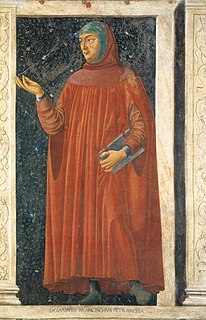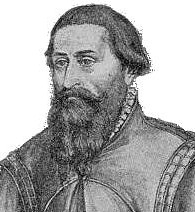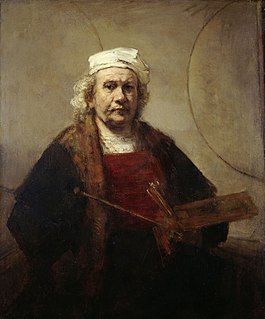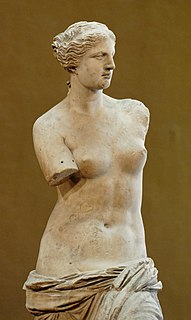Related Research Articles

Aesthetics, or esthetics, is a branch of philosophy that deals with the nature of beauty and taste, as well as the philosophy of art. It examines aesthetic values, often expressed through judgments of taste.

Periodization is the process or study of categorizing the past into discrete, quantified and named blocks of time. This is usually done in order to facilitate the study and analysis of history, understanding current and historical processes, and causality that might have linked those events.

The Renaissance is a period in European history marking the transition from the Middle Ages to modernity and covering the 15th and 16th centuries, characterized by an effort to revive and surpass ideas and achievements of classical antiquity. It occurred after the Crisis of the Late Middle Ages and was associated with great social change. In addition to the standard periodization, proponents of a "long Renaissance" may put its beginning in the 14th century and its end in the 17th century.

Veit Stoss was a leading German sculptor, mostly working with wood, whose career covered the transition between the late Gothic and the Northern Renaissance. His style emphasized pathos and emotion, helped by his virtuoso carving of billowing drapery; it has been called "late Gothic Baroque". He had a large workshop, and in addition to his own works there are a number by pupils. He is best known for the altarpiece in St. Mary's Basilica in Kraków, Poland.

In European academic traditions, fine art is developed primarily for aesthetics or creative expression, distinguishing it from decorative art or applied art, which also has to serve some practical function, such as pottery or most metalwork. In the aesthetic theories developed in the Italian Renaissance, the highest art was that which allowed the full expression and display of the artist's imagination, unrestricted by any of the practical considerations involved in, say, making and decorating a teapot. It was also considered important that making the artwork did not involve dividing the work between different individuals with specialized skills, as might be necessary with a piece of furniture, for example. Even within the fine arts, there was a hierarchy of genres based on the amount of creative imagination required, with history painting placed higher than still life.

Stephen Jay Greenblatt is an American Shakespearean, literary historian, and author. He has served as the John Cogan University Professor of the Humanities at Harvard University since 2000. Greenblatt is the general editor of The Norton Shakespeare (2015) and the general editor and a contributor to The Norton Anthology of English Literature.

Renaissance art is the painting, sculpture, and decorative arts of the period of European history known as the Renaissance, which emerged as a distinct style in Italy in about AD 1400, in parallel with developments which occurred in philosophy, literature, music, science, and technology. Renaissance art took as its foundation the art of Classical antiquity, perceived as the noblest of ancient traditions, but transformed that tradition by absorbing recent developments in the art of Northern Europe and by applying contemporary scientific knowledge. Along with Renaissance humanist philosophy, it spread throughout Europe, affecting both artists and their patrons with the development of new techniques and new artistic sensibilities. For art historians, Renaissance art marks the transition of Europe from the medieval period to the Early Modern age.
Cultural history combines the approaches of anthropology and history to examine popular cultural traditions and cultural interpretations of historical experience. It examines the records and narrative descriptions of past matter, encompassing the continuum of events about a culture.

Tilman Riemenschneider was a German sculptor and woodcarver active in Würzburg from 1483. He was one of the most prolific and versatile sculptors of the transition period between late Gothic and Renaissance, a master in stone and limewood.

High culture is a subculture that emphasizes and encompasses the cultural objects of aesthetic value, which a society collectively esteem as exemplary art, and the intellectual works of philosophy, history, art, and literature that a society consider representative of their culture.
Visual culture is the aspect of culture expressed in visual images. Many academic fields study this subject, including cultural studies, art history, critical theory, philosophy, media studies, Deaf Studies and anthropology.

Albanian art refers to all artistic expressions and artworks in Albania or produced by Albanians. The country's art is either work of arts produced by its people and influenced by its culture and traditions. It has preserved its original elements and traditions despite its long and eventful history around the time when Albania was populated to Illyrians and Ancient Greeks and subsequently conquered by Romans, Byzantines, Venetians and Ottomans.
Michael David Kighley Baxandall, FBA was a British art historian and a professor emeritus of Art History at the University of California, Berkeley. He taught at the Warburg Institute, University of London, and worked as a curator at the Victoria and Albert Museum. His book Painting and Experience in Fifteenth-Century Italy was profoundly influential in the social history of art, and is (2018) widely used as a textbook in college courses.

Scottish art is the body of visual art made in what is now Scotland, or about Scottish subjects, since prehistoric times. It forms a distinctive tradition within European art, but the political union with England has led its partial subsumation in British art.
John B Onians, FSA is Professor Emeritus of World Art at the University of East Anglia, Norwich and specialised in architecture, especially the architectural theory of the Italian Renaissance; painting, sculpture and architecture in Ancient Greece and Rome; Byzantine art, material culture, metaphor and thought; perception and cognition, and the biological basis of art. His recent work has been instrumental in the establishment of Neuroarthistory as a distinct set of methodologies.

Art history is the study of aesthetic objects and visual expression in historical and stylistic context. Traditionally, the discipline of art history emphasized painting, drawing, sculpture, architecture, ceramics and decorative arts, yet today, art history examines broader aspects of visual culture, including the various visual and conceptual outcomes related to an ever-evolving definition of art. Art history encompasses the study of objects created by different cultures around the world and throughout history that convey meaning, importance or serve usefulness primarily through visual representations.

The Renaissance in Scotland was a cultural, intellectual and artistic movement in Scotland, from the late fifteenth century to the beginning of the seventeenth century. It is associated with the pan-European Renaissance that is usually regarded as beginning in Italy in the late fourteenth century and reaching northern Europe as a Northern Renaissance in the fifteenth century. It involved an attempt to revive the principles of the classical era, including humanism, a spirit of scholarly enquiry, scepticism, and concepts of balance and proportion. Since the twentieth century, the uniqueness and unity of the Renaissance has been challenged by historians, but significant changes in Scotland can be seen to have taken place in education, intellectual life, literature, art, architecture, music, science and politics.

Gülru Necipoğlu is a Turkish American professor of Islamic Art/Architecture. She has been the Aga Khan Professor and Director of the Aga Khan Program for Islamic Architecture at Harvard University since 1993, where she started teaching as Assistant Professor in 1987. She received her Harvard Ph.D. in the Department of History of Art and Architecture (1986), her BA in Art History at Wesleyan, her high school degree in Robert College, Istanbul (1975). She is married to the Ottoman historian and Harvard University professor Cemal Kafadar. Her sister is the historian Nevra Necipoğlu.
David M. Lubin is an American writer, professor, curator, and scholar. He has published six books on American art, film, and popular culture.

The Église de l′Invention de la Sainte-Croix or, colloquially, Église Sainte-Croix is the mostly medieval parish church of the small commune of Kaysersberg-Vignoble, in the Haut-Rhin department of France. The church is situated on the Romanesque Road of Alsace thanks to its ornate sandstone portal from ca. 1230–1235; it is classified as a Monument historique by the French Ministry of Culture since 1932.
References
- ↑ "In the Eyes of the Beholder" by Tamara Steinert Dartmouth Faculty Scholarship Today - Features, 2003. Retrieved 23 November 2011.Archived here.
- ↑ Langdale, A. (1999) "Aspects of the Critical Reception and Intellectual History of Baxandall's Concept of the Period Eye." in Rifkin, A. (ed.) About Michael Baxandall. Wiley-Blackwell, p. 18.
- ↑ Randolph, A.W. (2004), "Gendering the Period Eye: Deschi da Parto and Renaissance Visual Culture" in Art History, Volume 27, Issue 4, pp. 538-562.
- ↑ In Memoriam: Michael David Kighley Baxandall by Margaretta M. Lovell & Elizabeth Honig. Archived 2012-09-06 at the Wayback Machine University of California, 2009. Retrieved 23 November 2011. Archived here.
- ↑ "Michael Baxandall" in The Telegraph 17 August 2008. Retrieved 22 November 2011.